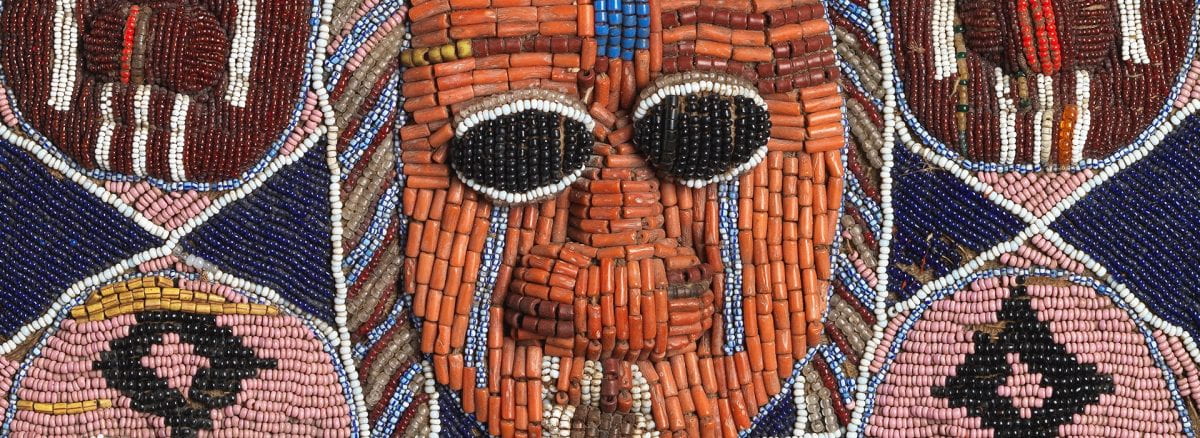One of Africa’s largest ethnic groups, the Yoruba people can be found across West Africa, but most live in Nigeria, in the western region known as Yorubaland. Here, they have excelled in crafts such as ivory and wood carving, weaving, and glassmaking for more than 1,000 years.
In Yoruba culture, glass beads are believed to hold spiritual power. Traditionally only kings and diviners – individuals who communicate with gods, goddesses and the otherworld – were allowed to own fully beaded objects, like this early 20th-century bag. A diviner, called a “babalawo” or “father of secrets,” would have carried important objects inside, such as the 16 consecrated palm nuts used to consult with the god of Fate.

Through color and pattern, a beaded bag conveyed the diviners’ knowledge, success and importance to society. Yoruba bead-workers worked in collaboration with skilled specialists, who brought an understanding of colors and their associations with gods and goddesses who could convey protection, power, wealth and well-being. For the Yoruba, carefully chosen colors, geometric designs and representational figures revealed each bag’s hidden power.
Although beads have a long history in Yorubaland, it was not until the 19th and early 20th centuries that beadwork flourished as an art form. The availability of glass “seed beads” from Europe – which were small and came in a wide variety of colors – appear to have inspired the Yoruba to produce new art.

